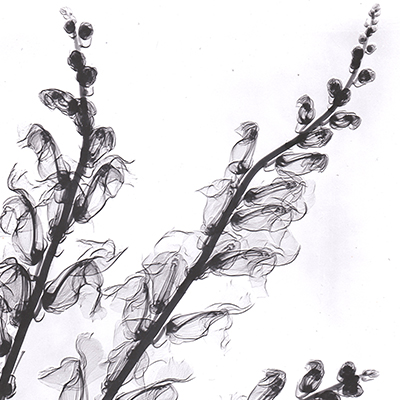

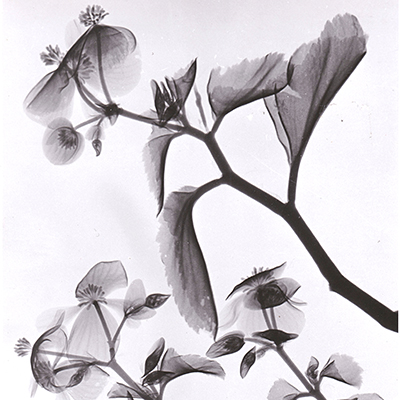







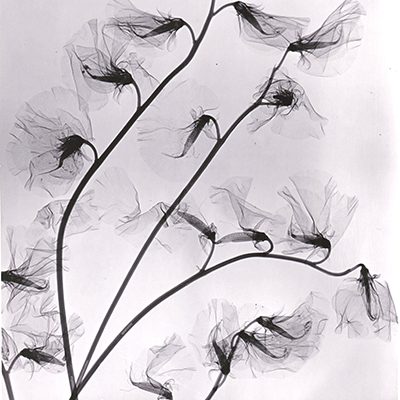

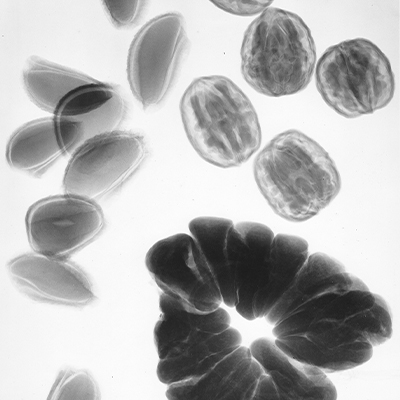



Series X-Ray Soft Radiation (1954-1958)
The earliest impetus for H. W. Franke to become involved in artistic experiments came in the course of his dissertation, in which he dealt with electron optics. The aesthetic quality of the images from the electron microscope gave him the idea that instruments of scientific photography could also be used for experiments that do not serve research, but exclusively for the creation of aesthetically interesting images. Early on, he also considered the idea of converting this type of laboratory equipment into art machines and examining them for their aesthetic potential. The first Work Group that sprang from this idea was based on devices based on X-rays.
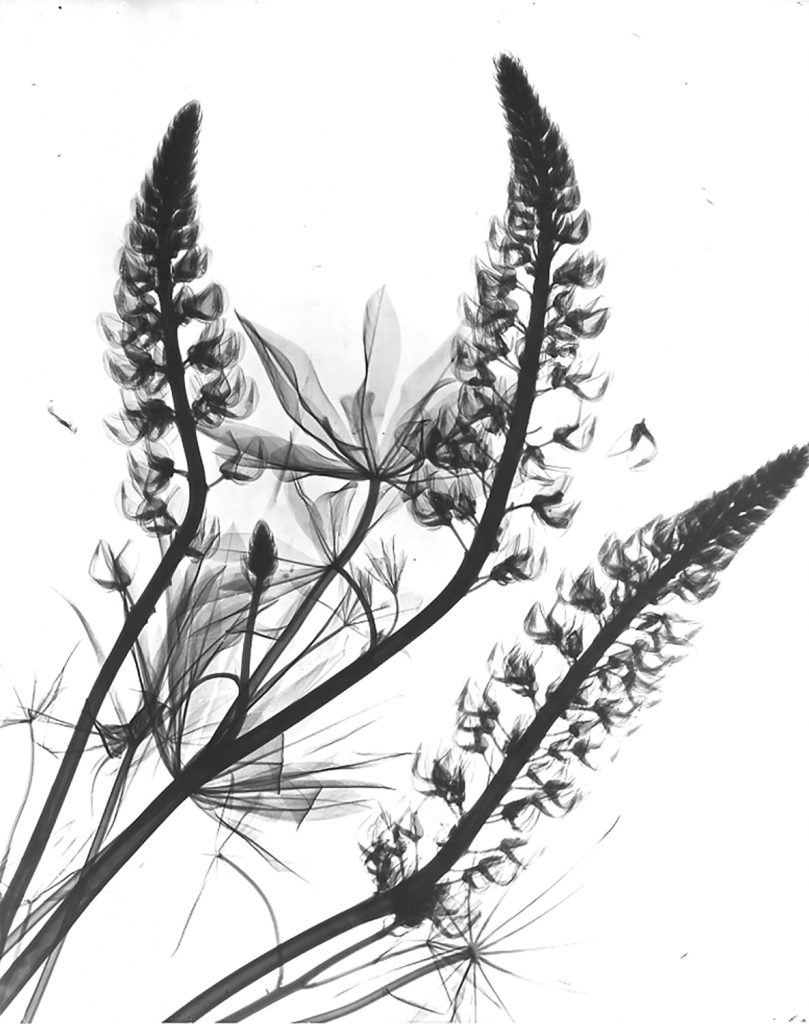



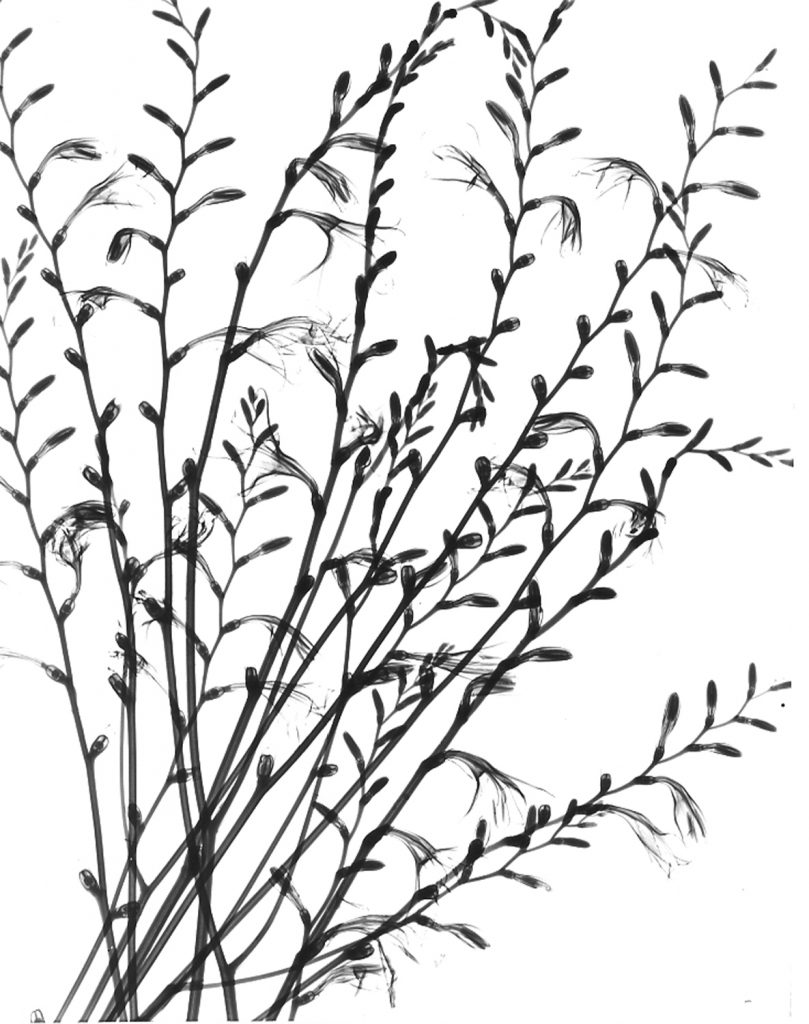

Franke experimented with a broad spectrum of X-rays, including soft X-rays, which were used in medicine to irradiate the skin. He used it to examine foods such as bananas, grapes or peppers, as well as various plants. What emerged had very different aesthetic qualities than conventional photographs. This is especially true of the transparency obtained in the transmitted light. It also stimulates further thoughts through the unusual view of things: For example, these images point out that the way we visually perceive things is only one possible view of the environment among many: a view that shows only partial aspects of that thing-in-itself that lies hidden underground.
Franke has also designed a very small part of the flower motifs as a “relief”. In this case, the motif was exposed twice and minimally offset to create a relief structure.
